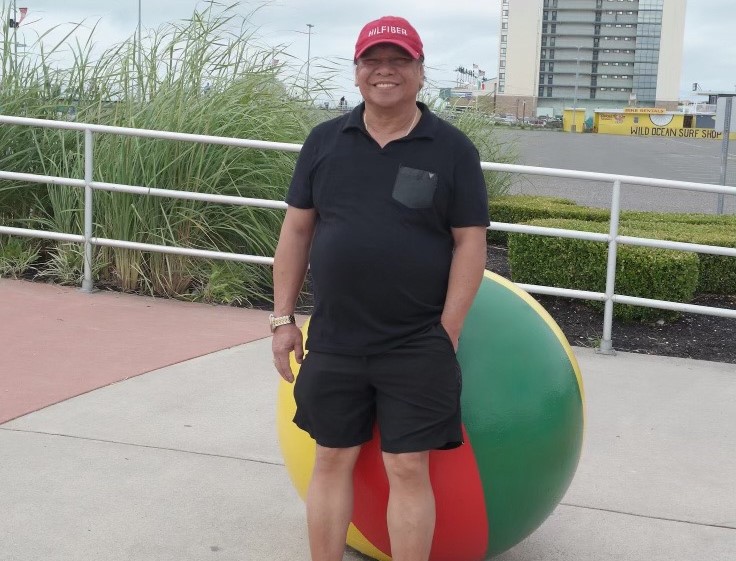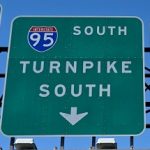COVID's Holy Week

Holy Week is upon us, the five days between Palm Sunday and Good Friday, when, according to the Christian faith tradition Jesus Christ was crucified two days before Easter Sunday.
Across the nation thousands upon thousands of essential worker families who have lost one or more family members to COVID will place flowers, symbols of spring and rebirth on the graves of their loved ones.
Thanks to the brilliant work of Record Guild members like Lindy Washburn and videographer Kevin R. Wexler we have a sense of the loss felt by the families of healthcare workers that died as a direct consequence of their serving others amidst our government’s fractured response to COVID that helped spread the highly contagious and deadly virus.
Their March 10 story chronicles the tragic story of Barbara Birchenough, a registered nurse from Midland Park, who had worked for 46 years at Clara Mass Medical Center in Bellville and died a year ago from COVID. Despite her asthma, out of her life-long sense of duty, she was on the job working to heal others just a few days shy of her retirement when she contracted COVID.
It’s through the compelling witness of Birchenough’s son Matt we learn that his mother and her co-workers were given only one mask per 12-hour shift, when what was required for their occupational safety was a fresh mask after each and every clinical encounter with a potentially infected patient.
“She was someone really upset by that as someone with asthma—she was potentially vulnerable to this,” Matt Birchenough says in the poignant video that accompanies Washburn’s reporting. “That’s all they provided her. I know she was talking about garbage bags for ICU nurses to wear as they were trying to protect themselves.”
WHY IT MATTERS
Collecting and widely disseminating these first-person accounts are critical so we can reconstruct how healthcare institutions, congregant living facilities and the government all failed to protect workers, and by extension their families and the broader community from this virus.
This assessment is essential as part of an effective response to the global public health crisis that we are still in the midst of and for improving our response for the next one. Regrettably, this is exactly the kind of collective amnesia we experienced with regards to the lessons learned, and then forgotten, from the 1918-20 Spanish Flu. It was a century ago that medicine came to fully grasp just how linked our own personal health could be with everyone else around us, regardless of their societal standing as a citizen, legal resident, or undocumented immigrant.
Back in March of 2020, my colleague at the Chief-Leader Crystal Lewis reported that the New York Nurses Association, the union representing 42,000 nurses, had correctly warned that the CDC’s watering down of occupational health safety guidance for PPE like N-95 masks to preserve inventory would result in nurses being exposed to the virus and as a consequence turning their workplaces into vectors for the virus.
Both things happened.
As a consequence, when the U.S. surpassed 500,000 COVID deaths the New York Times reported we had achieved the dubious distinction of having the highest death toll on earth. While we are just four percent of the world’s population, we account for one in five of the world’s deaths from COVID.
“About one in 670 Americans has died of Covid-19, which has become a leading cause of death in the country, along with heart disease and cancer, and has driven down life expectancy more sharply than in decades,” the Times reported.
HIDDEN FIGURES?
Yet, more than a year after the start of the pandemic, we still have no idea how many of the healthcare workers, first responders, transit workers, soup kitchen volunteers, teachers, grocery workers, Amazon warehouse workers, postal workers or undocumented food delivery workers were killed by a virus they contracted serving us.
We have hints here and there from reporting projects: for instance, thanks to a joint reporting project by the Guardian and Kaiser Health News, we do know that more than 3,500 health care workers who were under 60 years of age died from COVID, with 700 from just New Jersey and New York alone.
Even as healthcare workers and other essential workers continue to rise to the challenge of serving us, employers in both the public and private sector are doing all they can to avoid any liability for the impact of COVID on their workforce.
In fact, the essential round of pandemic economic relief was held up at the end of the Trump administration for Senator Mitch McConnell who wanted to indemnify employers from any liability by preventing state regulators or even OSHA for sanctioning employers who failed to take the basic measures required to protect their workers from COVID and to prevent the spread of the virus.
Whether it be Amazon, which is the focus of an intense unionizing effort in Bessemer Alabama by the Retail, Wholesale and Department Store Union, or our very own U.S. Postal Service, management has been loath to release their death toll.
Add to that list, New Jersey’s hospitals.
“The state’s hospitals generally do not disclose COVID illnesses or deaths among their employees, and legislative efforts to require such disclosures have been gutted,” reported Washburn. “Hospitals, unlike nursing homes are not required by Medicare to report their staff illnesses and deaths each week.”
CONTAGIOUS SACRIFICE
Incredibly, despite all of the hot air about contact tracing, there is no registry for occupational pandemic deaths for any category of healthcare professional or first responder.
What has been consistently under reported is just how many cases there are where a fatal transmission of COVID to a healthcare professional resulted in a member of their immediate family also perishing.
Consider the March 26, 2020 death of Alfredo Pabatao, 68, (pictured, credit HPAE) who was a transport aid at Hackensack Meridian Health Palisades Medical Center and was the first member of the Health Professionals and Allied Employees union to die from COVID. Four days later his wife Susana, an assistant nurse at a nearby nursing home, also succumbed to the virus.
According to the union, at least five more HPAE health care professionals lost their lives fighting the pandemic.
In a response to a query, Debbie White, RN, president of HPAE wrote that all too often her members that contracted COVID and are struggling to recover from it, were now actually being victimized by the very same employer they had served.
“Healthcare workers who contract COVID in the workplace should have immediate access to Workers Compensation,” White wrote. “Yet healthcare employers continue to fight to stop employees from accessing these benefits. They have even gone so far as to bring workers to court, subjecting them to a costly legal battle all in the effort to deny them benefits they deserve.”
“The signs proclaiming healthcare workers as ‘heroes’ on windowsills and lawns are fading into memory now,” wrote White in a recent op-ed. “Those signs were heartwarming at the time, yet too many of these “heroes” reported feeling disposable. Many healthcare workers were unprotected and felt exposed and at risk of contracting the virus. We filed complaints with Occupational Safety and Health Administration, or OSHA, and the many citations issued in response were a testament to the fact that employers indeed failed to protect our workers.”
THE BIGGER PICTURE
With over 30 million Americans infected by COVID we can project, depending on the research study you examine, that as many as one in three Americans will be dealing with lingering health effects from COVID of varying severity. That’s millions of people, many of whom will have contracted the virus while working. Yet right now, most states lack a Workers Compensation presumption from COVID and even in states like New Jersey that has one, employers can, and already have, fought the claims by disabled workers.
New York State Senator Brad Hoylman lives in lower Manhattan not far from the World Trade Center. It was at the WTC that close to 3,000 people were killed on the day of the 9/11 attack. In the years since, as many people have died and tens of thousands more have been sickened by their exposure to the toxic air that permeated the neighborhood during the cleanup despite the assurances from the U.S. EPA the air “was safe to breathe.”
Like the CDC’s fatally flawed mask guidance, that EPA guidance, issued to ensure Wall Street timely reopening, resulted in essential worker deaths and catastrophic illness.
Hoylman has introduced state legislation to create a voluntary COVID Health Registry, similar to the one that was created for the 9/11 WTC first responders and survivors who lived and worked in lower Manhattan and western Brooklyn. It was that registry which helped both state and federal policy makers gauge the public health implications from the toxic exposure as they became evident years later.
“We don’t know what the long-term effects of COVID are yet,” Hoylman said. “Yet, we know there are lingering side effects from respiratory conditions to psychotic breakdowns and that is all just coming to light. Hopefully, this is not a lifetime disability, but there are some worrisome signs that suggest the impact could be long term for as many as ten percent or more of COVID cases.”
Hopefully, this concept will be championed by someone like Congressman Bill Pascrell (pictured, top), whose entire career has been dedicated to supporting unions and workers safety. Certainly U.S. Labor Secretary Marty Walsh, himself a Boston Firefighter, who spent time at the WTC, knows how important it is to have the backs of those whose first impulse is to serve us ahead of themselves long term.
We need a national health registry for COVID’s essential workers and their families. And while it may seem just altruistic, it’s really more about learning as much as we can about how the occupational spread of this deadly virus works for society’s own self-preservation.
A year into this once in a century mass death event we may be in a more precarious place than ‘the light at the end of the tunnel’ assessment being proffered by politicians seeking re-election. We were in a plateau for a while in terms of COVID but now cases are on the upswing and more contagious and lethal variants of COVID are proliferating.
We are seeing an increasing percentage of the population vaccinated but what still has not been determined is to what degree do the vaccinations short circuit the asymptomatic spread of the disease which continues to present a significant risk to our healthcare workers and essential workers which has consistently gotten short shrift throughout the pandemic.
While defenders of the government’s response may want to cast COVID-19 as some sort of ‘Black Swan” unforeseeable event. Thanks to the work of Laurie Garrett, described as “the prophet of the pandemic” by the New York Times, we know such a scourge had long been predicted by scientists. Despite multiple reports describing just how vulnerable the world was, we doubled down on shortchanging public health programs while letting millions of Americans sink deeper and deeper into chronic illness without health care.
Throughout the arc of our COVID tribulation there’s a strong scientific consensus that the U.S. achieved this in large measure because our response was fractured and inconsistent. It was largely informed by a materialistic value system that elevates profits over people and so discounts heavily the value of the lives of health care workers and others that flesh out the essential workforce.
Without a comprehensive compassionate national response for essential workers that COVID ‘blue light special’ discounting of their lives and the lives of their families will continue.





